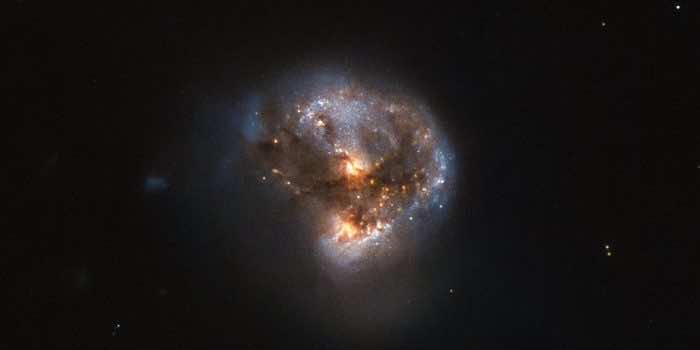The MeerKAT telescope in South Africa has detected a strong radio-wave laser known as a “megamaser.” The discovery is the farthest megamaser of its sort yet discovered, located around five billion light-years from Earth. The light from the mega maser traveled 58 thousand billion billion kilometers (58 followed by 21 zeros) to Earth. An international team of researchers discovered it using South Africa’s “MeerKAT,” a radio telescope with 64 antennas. Megamasers are radio-wavelength lasers that occur in nature and can shed some light on galaxy strikes. “Megamasers function like brilliant flashes that say: Here is a merger of galaxies that is creating new stars and feeding gigantic black holes,” said Jeremy Darling of the University of Colorado, one of the study’s co-authors.

In a study paper released last week, Darling and colleagues detailed the discovery of the most distant megamaser to date in a study paper released last week. The crew nicknamed the space laser Nkalakatha, a phrase that means “big boss” – to represent its record-breaking position. “Nkalakatha is one of the most intense OH megamasers known, as well as the most remote megamaser of its sort ever identified,” stated research co-author and Rutgers University astronomer Professor Andrew Baker. “
The megamaser was discovered on the first evening of a study comprising more than 3000 hours of investigations by the MeerKAT telescope, according to Dr. Glowacki. The team is using MeerKAT to examine specific parts of the sky in great detail, measuring atomic hydrogen in galaxies from the distant past to the present. The study of hydroxyl masers and hydrogen will aid astronomers in better understanding how the Universe has developed through time. “We have scheduled follow-up observations of the megamaser and hope to make many more discoveries,” stated Dr. Glowacki. The MeerKAT project’s major purpose is to use measurements of gas in galaxy clusters to better understand how galaxies formed over the last nine billion years. Because all these radio signals are so feeble, the scientists plan to collect hundreds of hours of data with MeerKAT in order to discover them. Advanced systems analyze the information to enable the finding of signals from distant and old items of interest. “In the past, it was supposed that galaxies merged more frequently, and the previously undiscovered OH megamasers will enable us to verify this notion.”


